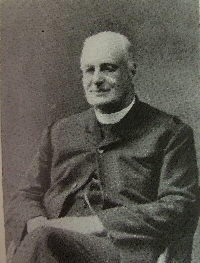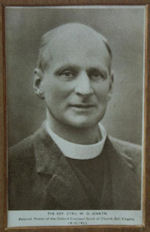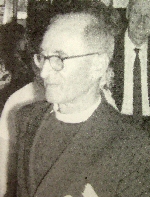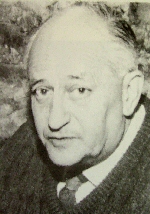Masters 1881 – 1933
First Master of the ODG, Rev F.E.Robinson
Rev F.E.Robinson was one of the founders of the Oxford DiocesanGuild of Church Bellringers. At the meeting in Reading on 13th November 1880 to consider the formation of a Guild, it was Robinson who, when it came to electing a committee, rose from the floor with a prepared list of names of who should be on it. The list included 7 clergymen and 7 well-known ringers. It included Robinson himself, who was both a ringer and a clergyman. At the inaugural meeting in Oxford on 17th January 1881 Robinson was duly elected as the Guild’s first master, a position that he held until his death 29 years later in 1910.
The Rev Francis Edward Robinson M.A. was vicar at Drayton between 1878 and 1908. He was born in 1833 in Begbroke, Oxon.
Shortly afterwards the family moved to Stonesfield where his father (also the Rev F.E.Robinson) was rector between 1834 and 1882. He was educated at Winchester and Exeter College, Oxford, graduating with a fourth
class honours degree in 1853. He then worked in the Old Bank, Oxford, until 1867, first as a clerk, later as a partner. He learned to handle a bell as an undergraduate
After visiting Appleton in 1859 he discovered the joys of change ringing. Alfred White and his sons taught him change ringing so well that he rang his first peal that year. He made many attempts to ring a peal of Stedman and was so pleased to succeed in 1861 that he gave two tenors to Appleton at a cost of £254. He was ordained in 1868
After becoming a curate at Tubney he lodged in Appleton Vicarage. Lord Wantage presented him to the living in Drayton in 1878. To fulfil his ambition to become the first cleric to ring a peal on the bells of his own parish church he gave a treble and a tenor to augment the existing six at Drayton and went on to realise his dream. He was a competent conductor and had called peals of both Stedman Triples and Caters. He later became a member of the Ancient Society of College Youths. He was one of the founder members of the ODG in 1881 and became its First Master, a post he held until his death in 1910. In 1908 he moved to Wokingham where he remained until his death in 1910. Ringers subscribed to a memorial tablet to him in the cloisters of Oxford Cathedral. He is buried in Wokingham All Saints churchyard.
Robinson tried to retire from the post several times during the last ten years, when he had several illnesses but each time the committee persuaded him to stay on. This pattern of long serving masters, all of whom were
clerics, lasted for nearly a century:
Revd C W O Jenkyn 1910 – 1933, Canon G F Coleridge 1933 – 1946 and Canon C E Wigg 1946 – 1973. Since the 1970s however, Guild masters have all been laymen and they have served for much shorter terms of office, with
7 masters covering a period of 30 years.
Photographs of Robinson (and Jenkyn who succeeded him) still hang in many ringing towers in the Oxford Diocese, including the ringing chamber at All Saints Wokingham where you can also find F.E.Robinson’s grave in the churchyard.

Masters 1933 – 1973
Canon G.F. Coleridge
Coleridge was born in 1857 in Cadbury, Devon, where his father held the living. He learned to handle a bell there when he was 17.
He graduated from Keble College in 1884 and went to Caversham for his first curacy, where he was instrumental in getting the Caversham ring augmented from 6 to 8 bells in 1891. While an
undergraduate he was first Secretary of the Oxford University Society, then Master. He was vicar of Crowthorne, Berks from 1904 until his death on 22 November 1949. He was active in the formation of the ODG and Secretary
of the Reading branch for 10 years before becoming Chairman of the Sonning Deanery branch from 1923 to 1947.
He was President of the Central Council from 1921 to 1930 and made a Vice President of the ODG in 1927.
He rang 273 peals, many with F.E.Robinson and enjoyed long lengths taking part in the 15041 Stedman Caters at Appleton.
After 1933 he was no longer able to make bell inspections and this job devolved to the General Secretary. His bouts of arthritis prevented him attending all the Branch meetings.
When he died there was much argument as to a suitable memorial. Everyone agreed there should be a tablet in Christ Church Cloisters next to those for previous Masters. It was also suggested that the two trebles of the Cathedral should be recast. The work was finally completed in 1954. The two new trebles cost £157 and the two tablets, one in the cloisters, and one in the ringing room cost £60.




